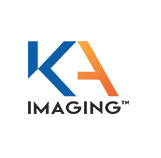In the realm of industrial safety and quality assurance, Non-destructive Testing (NDT) emerges as a cornerstone methodology, crucial for inspecting and ensuring the integrity of materials without compromising their usability. Known under various nomenclatures such as Non-destructive Examination (NDE) and Non-destructive Inspection (NDI), this technique plays a pivotal role across a diverse range of sectors—from aerospace to automotive. It essentially allows experts to detect potential problems before they escalate into costly or hazardous failures. This article delves into the significance of scientific imaging for NDT and introduces a groundbreaking advancement in this field with KA Imaging’s inCiTe and BrillianSe technology.
X-Ray NDT and Quality Control
Non-destructive testing (NDT) plays a vital role in quality control, as it can be used to evaluate flaws or discrepancies in objects without compromising the functionality. This means that it can effectively study the health of various components over time and detect issues before an actual malfunction occurs. Typically, this can be achieved without any significant damage to the sample.
Here are a few of the industries that benefit most from non-destructive testing (NDT):
- Security: This is where NDT is most commonly known, it can be used to screen luggage or other items
- Automotive: NDT is used to inspect the health of various automotive parts, including EV batteries.
- Additive manufacturing: NDT is used to inspect the quality of 3D printed materials
- Aerospace: NDT is used to inspect aircraft components for safety.
- Construction: NDT can evaluate the integrity of buildings or pipes, detecting cracks and defects.
Although these are not all the industries that actively utilize NDT, they are among the most prominent. Overall, NDT has a near endless variety of uses in an equally endless number of industries.
Introducing KA Imaging’s inCiTe Technology
Since 2015, KA Imaging has developed innovative X-ray imaging technology and systems for use in multiple industries.
KA Imaging offers inCiTe, the first commercial X-ray CT system to utilize BrillianSe technology to utilize advanced technology for detailed three-dimensional imaging. inCiTe employs Micro-CT to analyze each layer of an object meticulously, enhancing the ability to spot smaller discrepancies as soon as they become visually apparent.
The exceptional performance of inCiTe is primarily due to its propagation-based phase contrast, which naturally increases the contrast within samples based on X-ray phase changes. When paired with the innovative BrillianSe X-Ray Detector, inCiTe achieves remarkable results in quality assurance, making it capable of highlighting quality issues in a wide array of material samples.
BrillianSe Novel Detector Technology
BrillianSe is the latest innovation in X-ray detection technology, functional for high-brilliance imaging. It is a direct conversion detector, forgoing the need to first convert X-ray photons to be visible. The detector utilizes high spatial resolution amorphous selenium (a-Se) and propagation-based (grating less) in-line phase-contrast. KA Imaging developed the detector with a unique hybrid of a-Se in addition to complementary metal oxide semiconductor (CMOS) sensors. BrillianSe is the world’s highest spatial resolution X-ray detector, and is exclusively developed and patented by KA Imaging.
inCiTe And BrillianSe For NDT
- Low-density Material Phase Contrast: The BrillianSe X-ray Detector can be applied for low-density material phase contrast, providing higher resolution images than X-ray technology without similar detection equipment. In the biomedical industry, BrillianSe can be employed to analyze the composition of low-density pharmaceuticals, such as tablets.
- Synchrotron Micro-nano CT: BrillianSe pairs well with both micro-computed tomography (micro-CT) and nanotomography (nano-CT) technologies.
How inCiTe and BrillianSe Improves Non-Destructive Testing (NDT)
BrillianSe serves as an innovation for non-destructive testing with a hybrid of a-Se and CMOS technology. The photoconductor a-Se enhances sensitivity when imaging low-density materials, making it capable of examining fragile samples without the risk of significantly damaging them. It is the only direction conversion material to be used in commercial flat-panel X-ray imaging (FPXI). Combined with CMOS, which allows for direct detection without loss of resolution, BrillianSe utilizes the advantages of both CMOS and a-Se technology. CMOS is also famous in the imaging industry for its ability to inspect with lower power consumption and noise levels than other detection sources.
Since some materials have poor x-ray adsorption compared to others, inCiTe’s phase contrast serves as a tool to achieve heightened visibility of a sample with low absorption. Along with the BrillianSe phase contrast edge enhancement, this technology creates a distinct contrast on images, making the intricacies of a specimen’s composition more visible. This expands the library of materials that scientific imaging can effectively inspect, no longer being limited by a material’s level of absorption. With the inCiTe microscope and BrillianSe detector, discrepancies are easier to locate and decipher through its heightened contrast. The state-of-the-art technology highlights areas that may not appear as distinctly, or at all, with normal x-ray usage.
Let’s take a look at the inCiTe microscope and BrillianSe detector in action:
BrillianSe image (left) of 18650 lithium ion battery, and BrillianSe image with an included 0.5mm aluminum filter (right) showing more bent cathodes and anodes.


Using inCiTe’s phase contrast with BrillianSe’s phase contrast edge enhancement on this lithium ion battery vastly enhances the clarity of the sample. Other commercial detectors on the market may not be able to process materials of this size as effectively without the resolution and phase contrast inCiTe and BrillianSe offers.
KA Imaging’s inCiTe and BrillianSe technology marks a revolutionary stride forward in the domain of scientific imaging for non-destructive testing. They offer unmatched clarity and enhanced detection capabilities that boost safety and efficiency across numerous industries. Where high performance meets affordability, inCiTe and BrillianSe sticks the landing. With its unique blend of amorphous selenium (a-Se) and CMOS sensor technology, BrillianSe facilitates better visualization and identification of discrepancies, even in low-density materials. If you’ve yet to adopt KA Imaging’s, inCiTe and BrillianSe technology, you could potentially lose the opportunity to take your standards of quality control to new heights. As one of many KA Imaging innovations, inCiTe and BrillianSe are exclusive technologies that expand on what traditional imaging is capable of, offering the highest resolution in the industry. It ensures that vital components in everything from electronic gadgets to skyscrapers are tested effectively, maintaining both their functionality and structural integrity.
As an organization that stands on the beacon of innovation, KA Imaging creates products that amplify the functionality and quality of scientific imaging for x-ray NDT. Learn more about how KA Imaging’s cutting-edge technology can help your industry today.

